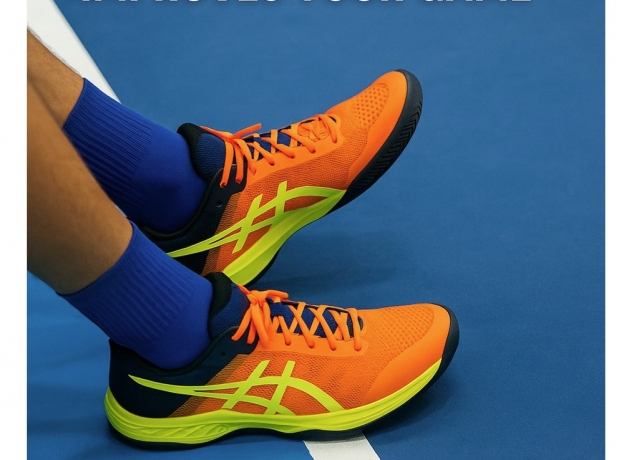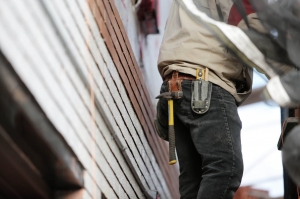If you play any racket sport, you already know this: the wrong shoes make the court feel longer, heavier, and strangely slippery. The right ones, though, give you that planted, confident base so you can load, push, stop, and change direction without thinking. That’s the real job of modern court shoes—protect your feet and joints while letting your movement stay quick, balanced, and repeatable.
So what exactly are “court shoes”?
In tennis (and similar court sports), shoes are designed for side-to-side movement, sudden stops, and explosive first steps—not for straight-line speed, as seen in running. Good pairs combine lateral stability, controlled flexibility, and grippy outsoles that are tuned to the surface beneath you. If you’re shopping now, this is a great starting point: check out the latest selection of court shoes to get a feel for fit, brands, and build options.
What to look for (and why it matters)
- Stable uppers that “hug” without strangling. Look for supportive panels around the midfoot and heel. If your heel lifts or your foot “rolls” when you plant, it’s a pass.
- Lateral-friendly midsole. Cushioning should absorb impact while staying torsionally stable so the shoe doesn’t twist when you cut. If it feels squishy but wobbly, try something firmer.
- Outsole that matches your surface. Clay favors a full herringbone pattern that releases clay and keeps traction. Hard courts require denser rubber compounds and reinforcement in the toe/medial zones for toe-draggers. Indoors usually call for non-marking rubber with a bit more give.
- Fit first, then features. If your toes jam on stops or there’s excess volume over the forefoot, the fanciest tech won’t help. Try pairs late in the day when your feet are slightly swollen—this mirrors the match conditions.
- Real durability, not just marketing. Check the rubber wrap around the toes and the lateral sidewall. Frequent sliders and aggressive movers should prioritize durability skews over ultralight models.
Avoid these common mistakes.
- Buying running shoes for the court. They’re built for forward roll, not bracing sideways. That mismatch is why ankles complain.
- Sizing too small “for speed.” Strained nails and blisters are not a performance feature. Aim for a thumb’s width of room after lacing snug.
- Ignoring your style. A heavy baseliner who slides and defends needs more stability and outsole life than a serve-and-volleyer who lives at the net.
- Mixing surfaces with one do-it-all pair forever. It’s fine to start that way, but if you split time across clay and hard, consider a second pair dialed for each.
Brands you’ll see (and why players love them)
You don’t need to guess at quality. Stick with proven tennis makers and you’ll rarely go wrong. On TennisShop.ae, you’ll find staples like Nike, ASICS, Babolat—each with its own feel and fit philosophy. Nike’s Vapor line is famed for fast, close-to-court response; ASICS earns loyalists with its GEL-based stability and lasting comfort; Babolat builds durable uppers for hard-court grinders.
Hard court vs. clay vs. indoor: a quick cheat sheet
- Hard court: Go for tougher rubber, reinforced toe/medial zones, and slightly firmer cushioning to keep you stable on gritty acrylic. If you toe-drag on backhands, prioritize abrasion protection.
- Clay: Seek full herringbone tread for bite and easy clay release, with a touch more flex through the forefoot. A snug midfoot helps when you slide into shots.
- Indoor: Prioritize non-marking gum-style rubber for grip without scuffing. Many players prefer a lighter, more flexible profile inside.
Foot type and support, quickly explained.
If you’re neutral through the arch, most mainstream builds will work. If you’re prone to rolling inward (overpronation), look for a firmer midfoot shank and a slightly straighter last so the shoe resists collapse. High arches? Seek cushioned insoles and a bit more give under the heel. Custom orthotics can be comfortably accommodated in most court shoes if the stock insole is removed first.
Match shoes to your playing style
- All-court attacker: You sprint, stop, and redirect often. Look for a secure heel counter, midfoot shank, and responsive cushioning that doesn’t bottom out late in the third set.
• Baseliner/defender: You cover meters and grind rallies. Stability and outsole life take precedence over minimal weight. A slightly broader base and beefier sidewalls pay off.
• Doubles/serve-and-volley: Quick first steps and fast recoveries to the net matter most. A lighter, nimble model that still locks the heel is ideal.
Break-in and care tips most players skip
New court shoes typically settle within 2–3 sessions. Don’t debut them in a tournament. Rotate pairs if you play often; foam rebounds better with a day off between wears. A quick rinse after clay days and a wipe after hard-court dust will keep traction honest. If you practice five or more hours weekly, expect to replace your shoes every 3–4 months; if you’re a weekend warrior, replacing them twice a year is about right.
A few model lines to keep on your radar
If you prefer a fast, precise feel, Nike’s Vapor family is a smart test drive; if you want locked-in stability with cushioning, ASICS GEL-Resolution or Solution Speed FF lines are perennial favorites. These are the kinds of models you’ll commonly see featured alongside men’s and women’s selections on dedicated tennis-shoe pages.
How to pick your size without guessing
Stand up when you try the pair and do three tests: (1) quick lateral shuffles—does the heel hold or lift? (2) sudden stops—do your toes hit the end? (3) single-leg mini-squats—does the shoe stay upright or twist inward? If anything feels off in the shop, it won’t fix itself on the court. Half up or down until the shoe disappears on your foot.
Still torn? Start here
When in doubt, choose the shoe that keeps you balanced when you’re tired. That’s usually the slightly more stable option over the featherweight rocket. And if you only change one thing this season, make it your footwear. The returns—fewer aches, safer slides, cleaner footwork—show up immediately.
Ready to find your fit?
Browse the current lineup of performance-focused court shoes and filter by men’s or women’s styles, surfaces, and trusted brands. Try on two fit profiles back-to-back, bring your match socks, and give each pair a real on-court test with TennisShop.ae. Your game (and your joints) will thank you.






